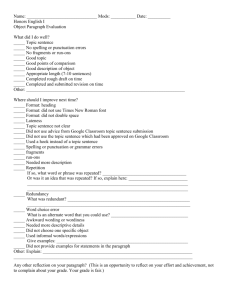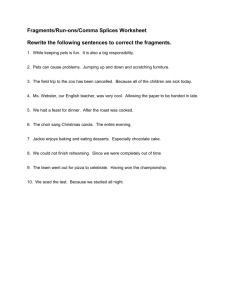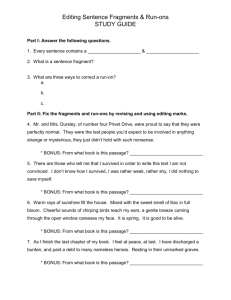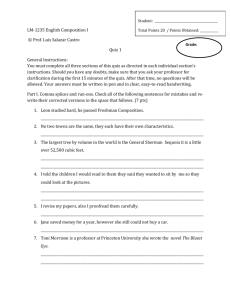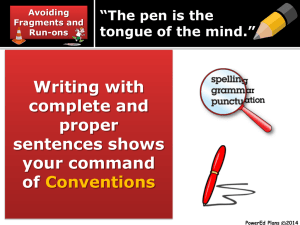Task: Fragments & Run-ons
advertisement
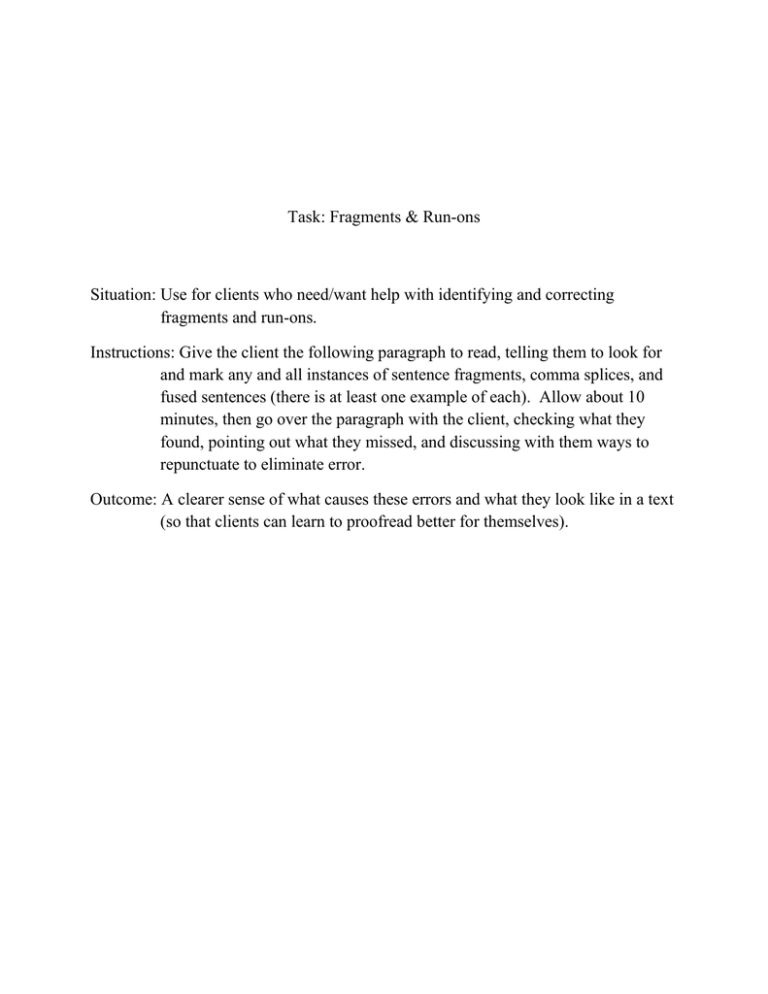
Task: Fragments & Run-ons Situation: Use for clients who need/want help with identifying and correcting fragments and run-ons. Instructions: Give the client the following paragraph to read, telling them to look for and mark any and all instances of sentence fragments, comma splices, and fused sentences (there is at least one example of each). Allow about 10 minutes, then go over the paragraph with the client, checking what they found, pointing out what they missed, and discussing with them ways to repunctuate to eliminate error. Outcome: A clearer sense of what causes these errors and what they look like in a text (so that clients can learn to proofread better for themselves). Fragments & Run-ons Task Children receive conflicting messages from a variety of sources. Which cannot be silenced: teachers, books, friends, and television programs. Information is widely available from an ever-increasing number of sources, the fact is that this is what most people in our current society prefer. We have, from time to time, experimented in this country with limited access to potentially damaging or offensive materials such as books and movies. But these experiments have not withstood legal challenges. The courts have decided that Americans have the right to choose what they see or hear and that writers and others have the right to create what they wish. Although, certain extreme circumstances, like child pornography, are so offensive and damaging to the children being filmed that as a society we have said that such products are repugnant. It is not necessary to define, in narrow terms, what constitutes an offensive object, the fact that people agree that it is disturbing and wrong constitutes the definition. Which is one argument that is now being made about advertisements directed at children. But as a society having agreed to limit speech only in the most extreme cases. There is nothing in the making of advertisements that is as purposefully vulgar or harmful as there is in child pornography. If anything, advertising more closely resembling the language of our everyday speech. We have brought this on ourselves by consistently preferring media that dare to push the boundaries of what’s considered acceptable the result is confusion. Laws can only protect us if we want the protections that they afford, and we keep changing our minds about what we want at our peril.
